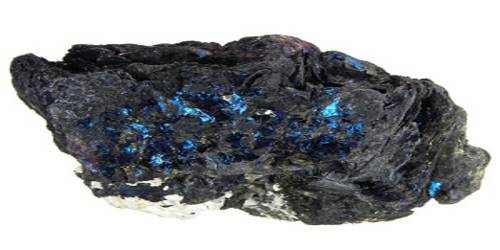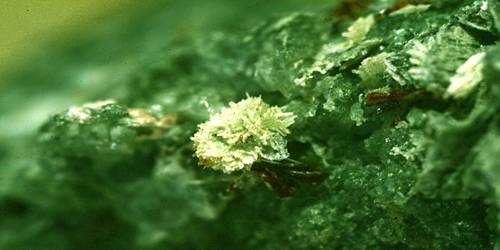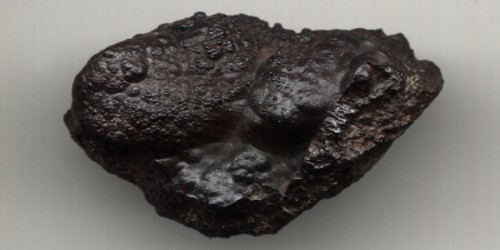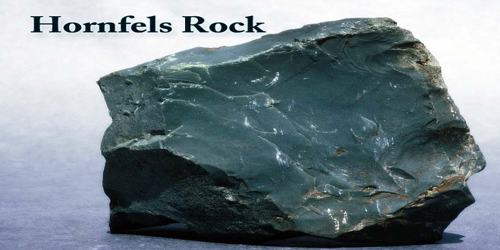Covellite (also known as covelline) is a rare copper sulfide mineral with the formula CuS. It is a blue mineral consisting of copper sulphide, typically occurring as a coating on other copper minerals. It is a native sulphide of copper, occurring in masses of a dark blue color; — hence called indigo copper. Despite the very rare occurrence as a volcanic sublimate, the initial description was at Mount Vesuvius by Nicola Covelli (1790–1829).
General Information
- Category: Sulfide mineral
- Formula: copper sulfide: CuS
- Crystal system: Hexagonal
- Crystal class: Dihexagonal dipyramidal (6/mmm)
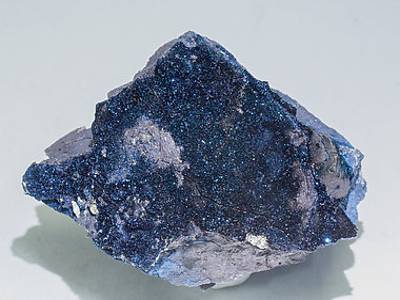
Properties
In covellite, some of the copper ions are at the center of sulfur tetrahedrons that are linked on their bases to form sheets. This indigo blue mineral is ubiquitous in copper ores, it is found in limited abundance and is not an important ore of copper itself, although it is well known to mineral collectors.
- Color: Indigo-blue or darker, commonly highly iridescent, brass-yellow to deep red
- Crystal habit: Thin platy hexagonal crystals and rosettes also massive to granular.
- Cleavage: Perfect on {0001}
- Tenacity: Flexible
- Mohs scale hardness: 1.5 – 2
- Luster: Submetallic, inclining to resinous to dull
- Streak: Lead gray
- Diaphaneity: Opaque
- Specific gravity: 4.6 – 4.8
Occurrence
Covellite’s occurrence is widespread in the United States. In Silver Bow County, Montana, covellite has been found in veins at depths of 1,150 m (3,770 ft), as the primary mineral. Covellite formed as clusters in these veins reaching one meter across in Leonard mines, Montana. Commonly found with and as coatings on chalcocite, chalcopyrite, bornite, enargite, pyrite, and other sulfides, it often occurs as pseudomorphic replacements after other minerals.
Locally, findings of covellite have been discovered in salt domes and at the McClellan copper mine in Foard County, Texas. An unusual occurrence of covellite was found replacing organic debris in the red beds of New Mexico.
Information Source:
